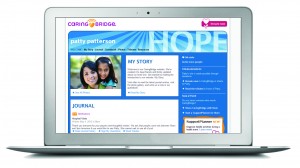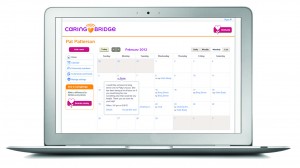It was helpful to re-read my New Year’s post and its emphasis on being more present as I thought about how to approach this first post of 2013. Being present, being mindful, really, involves focusing on the actions and emotions of the moment.
Grief. Joy. Sadness. Happiness. Side by side.
A couple of years ago, once we were through initial trauma of my mother’s brain injury and could focus a bit more on issues of rehabilitation, the losses stretched out in ripples, and the fear and sadness also mixed with gratitude and anger. After so many years of struggle we were finally expecting a baby, and here I was, in my third trimester, on bed rest and fighting to keep that baby safe. I wanted my mother. I wanted my daughter to know her grandmother. I wanted her birth to be free from all this heartache and upheaval, not just for me or for her, but for all of us. I was angry that we wouldn’t be able to just have the joy.
But I didn’t realize then the heart and mind’s capacity for preservation and compartmentalization. I didn’t know that I could weep for mother’s situation and yet hold my daughter in my arms and feel pure, all-encompassing joy. That even when it felt like things were crashing down around us—mother in rehab, father in the hospital, maternity leave that ended early, sickness for baby, sickness for me, plus all the normal newborn, breastfeeding, sleep deprivation woes—I could feel so utterly content, that even as my hold on all the other moving parts of my life slipped through my fingers, I never felt more solid, stable, or sure.
Over the past two years, I’ve often thought about this dichotomy: How I’ve never been happier than I am when I am with my daughter, how this always-cheerful, adaptable, chatty, precocious little girl has changed us, changed everything. How I gain so much every day I get to be her mother, even as more and more slips away. How I’ve re-calibrated to an ever-shifting sense of normal, where I watch people I love suffer, where we all shed more tears than we used to. Guilt lingered—did the many tears I’ve shed somehow take away from my gratitude for her? Did the joy and the love somehow mean I didn’t appreciate the gravity of all the stresses around us? Could I feel both so completely and simultaneously and have each one be true, be real?
Yes. If there is anything I have absorbed from the past few years, it’s that.
I remember so clearly the day this fall we found out my father’s lone remaining kidney was indeed failing. I called my husband but couldn’t get all the words out to tell him, there simply wasn’t enough air. Heart-ache, I repeated the word in my head as I battled my way down busy Huntington Ave, the traffic lights blurry through hot tears. This is what it feels like when your heart aches.
I picked my daughter up from school later that same day and listened to her chatter away about her day and who and what she played with. We went to the library, where we played with trains and picked out books. She held my hand in the parking lot, and helped me empty the dishwasher. In the moment, in the middle of our normal activity, I found the air I needed. I laughed. Again and again the pieces threaded back together.
Watching my father deteriorate these past few months has been a series of chest-clenched moments, where I know what I see but don’t want to see it, where I can’t talk about it so most times, I don’t. I’ve been conscious of creating time where my parents can be with my daughter. No matter how terrible he feels, when he is with his grandchildren, when they run to him with their arms outstretched, when my daughter climbs onto his lap and says, “I love you so much,” nothing else exists for him but that moment.
Waiting for his transplant and watching him get worse and worse while at the same time, having so much hope and optimism that he will have a good outcome…again, we have grief and joy, sadness and hope, all mixed up.
I won’t say that the heart-bursting gratitude we have for our daughter, for this life we’re living with her, is sweeter or more appreciated because of all the difficult stuff that exists right along with it, because I can’t imagine feeling any less than this, regardless of what else might be going on. No one ever gets just the joy, that’s not how life works. But if we’re lucky, even with the sadness, we still get joy. We can feel both so completely and simultaneously and have each one be true, be real. Side by side, each a measure of love.
So that’s my hope for 2013. I don’t know how much of the tough stuff the year will bring, but I want to be mindful and fully present in the joy wherever we can find it, to not let it slip by without squeezing every ounce out of it.









